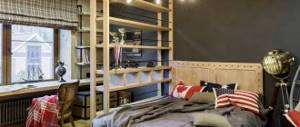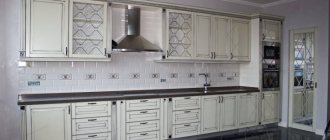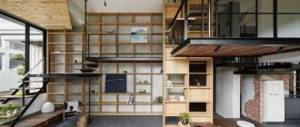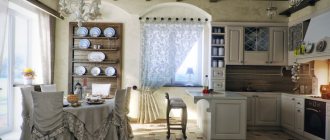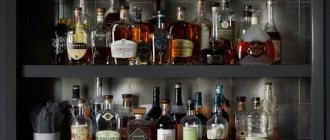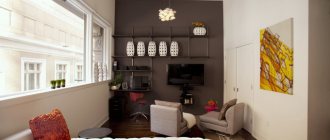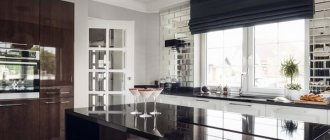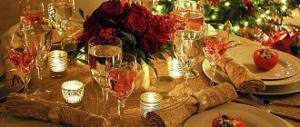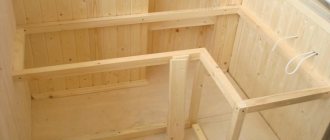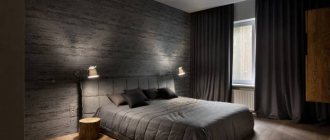Strict style and monochrome colors, straight shapes and large windows - the facade of a Scandinavian-style house. The apparent simplicity fits organically into the landscape of the Nordic countries. Projects of buildings in the Scandinavian style combine the general architectural research of Denmark, Sweden, Norway, and Finland.
An example of the facade of a house with a Scandinavian style terrace
Factors in the formation of the Scandinavian style
Regional affiliation has a significant influence on architecture. There are several important factors that had a special impact on the formation of the Scandinavian style:
- Nature. The abundance of forested rocky shores, mountains, rivers - all this wealth encourages unity with the environment. Therefore, natural materials, often wood, are used for the construction and decoration of houses. And the building itself, with its lines and colors, should organically fit into the landscape, continuing it. Therefore, Scandinavians build one- and two-story houses that are not surrounded by fences. Occasionally there is a low picket fence as an additional decoration. Landscape design does not involve a large number of bright flower beds.
Facade of a house made of timber in a Scandinavian style - Climate. Harsh winters with heavy rainfall have led to the proliferation of dark-colored gabled roofs. All this creates ideal conditions for snow to melt off the roof on its own. And additional cladding of the facade with boards or clapboards protects the housing from wind penetration. The small number of sunny days a year has led to the use of large floor-length panoramic windows in architecture. This ensures good lighting in the house even on cloudy days, and on sunny days it is an additional source of heat.
- History of development. Rome did not have a significant impact on the dominance of Christianity, so the pagan heritage formed at the genetic level a respectful and thrifty attitude towards the environment, which not only feeds, but also provides other benefits to the inhabitants of the north.
Decor and design of a two-story Finnish cottage
There is no ostentatious luxury, figurative decorations of houses, building designs are worked out in detail, every little detail is taken into account - all this speaks of practical saving of natural resources. Even wealthy northerners do not build pretentious palaces, but at the same time they can afford to experiment with the geometry of buildings. - Mentality. Survival in harsh climatic conditions, paganism left its mark on the character of the northerners, and this formed the following personality traits: thrifty attitude towards nature, adherence to traditions, practicality, restraint. This is what Scandinavian houses reflect: lack of ostentatious luxury, ergonomics, economical consumption of resources, commitment to tradition, discreet color design.
In modern architecture, the main directions in the construction of individual housing have been preserved, but modern technologies are used - alternative sources of heat and light (solar panels, heat pumps, wind deflectors).
The facade of a Scandinavian-style house is a combination of traditions and modern technologies, respect for nature, the absence of unnecessary details, practicality, and discreet, austere beauty.
Video review of a Scandinavian style house.
Architecture
Buildings in Scandinavia are built in accordance with national traditions and the harsh natural conditions of this region. with all the consequences of this definition. Architectural creations in the Scandinavian style have their own characteristics:
- The buildings are constructed from natural wood.
Initially, only felled trees were used, but over time, bare rough walls began to be sheathed with boards. - The color of the cladding boards
is soft shades, perfectly in harmony with the surrounding nature. - The rooms are heated evenly due to pipes built into the walls.
- Wide panoramic windows
are not only a natural source of light, but also an opportunity to enjoy the scenery outside the window (the same is inherent in the style). - During the construction process, they try not to disturb the surrounding landscape and vegetation, so that the finished building fits organically into the overall colorful composition.
House designs in the Scandinavian style are distinguished by their reliability.
Every little detail is important (even), so architects carefully think through all the details to ensure that the living space is protected from strong winds and frost.
Reliability, good quality and carefully thought out details, Scandinavian style, vaguely remind us of. Ancient construction technologies were distinguished by good quality and reliability.
The photo shows a house in a traditional Scandinavian style.
Distinctive features of Scandinavian facades
Northern heritage houses can be easily recognized by their strict simplicity and organic nature:
- Color design. Monochrome: white, brown, beige, ocher, blue. Pure colors are used. For decoration, contrasts are used with the colors of doors and window frames. For wooden buildings, finishing and painting are rarely used. Protective compounds or shading coatings can be used to highlight the natural grain of the wood. Whereas the brick walls of a house can be painted without plastering.
- Form. These are rectangular one or two-story houses. Along the elongated part there is an entrance with a wide porch. Its presence allows you to keep the floors in the house clean. Terraces are often built, which can be indoor/outdoor, with or without fencing. They expand the usable area of the house.
Modern project of a house made of siding in a Scandinavian style - No basement or basement. In this case, the foundation is built high, which saves from flooding and serves as an additional insulating cushion for the house. All outbuildings are built separately in the same style as the house.
- Large windows in wooden frames. Plastic windows have not taken root in Scandinavian buildings due to their high thermal conductivity. It is worth remembering that frugality and practicality are the basis of the Scandinavian style. And wood has a good heat capacity, which is important in cold winters.
- Gable gabled roofs in dark colors. Their use is due to the large amount of precipitation in winter. This roof design allows snow to melt faster and move off the roofs on its own without effort.
- Lack of decor. The maximum that can be used is the half-timbered style. In other words, decorating with beams. A pattern is formed from them, arranged vertically, horizontally, diagonally and painted in a contrasting color in relation to the main color in which the facade is painted, most often dark brown.
It would seem that this design is excessively simple, but it is not. The facade of a Scandinavian-style house, the photo of which is presented below, clearly shows the restrained natural beauty and organic nature.
Interior and its characteristic features
There are no strict requirements for a Scandinavian-style interior. Thanks to this, you can decorate the appearance of a house or apartment both in compliance with all norms and traditions, and using various bright elements and your own originality.
Dining area interior in Scandinavian style
The main advantages of different styles are quite harmoniously combined here, creating a cozy, calm and completely unique home for residents with the same qualities.
The main colors and tones that are most suitable and also most often used in the exterior and interior of Scandinavian-style country houses:
- Light shades include beige, white, light yellow and cream shades;
- Of the bright colors, all shades of pink are most suitable;
- More restrained and muted colors are usually used in terracotta tones, as well as various shades of natural wood.
Without fail, window and door frames are made of natural wood. Quite often, wood paneling is used for interior decoration of a Scandinavian house, and various support beams play a decorative role.
As you can see, the Scandinavian style is very fond of natural wood. That is why finishing floors with this material will not come as a surprise to anyone. The surface of the finished floor must be coated with varnish or special oil, which allows you to highlight the excellent structure of the wood. In addition, you can use parquet, which is an excellent imitation of natural wood.
If the house has two floors, then the staircase is also made of natural wood or its imitation.
Interior of a two-story cottage in Scandinavian style
Residential attics are often installed in Scandinavian houses. Its overall design will depend on the area, as well as the slope of the roof. If this room plays the role of a bedroom, then the interior must contain delicate pastel colors. An airy blanket in warm colors should be thrown over the bed, which will bring special comfort to the room.
The interior of the living room should also be beautiful, but as simple and practical as possible. No pretentious elements or pretentious accessories, just cozy upholstered furniture and a large number of original lighting fixtures.
Principles of Scandinavian design
Answering the question of what the Scandinavian style is in the interior of a residential space, one can talk for a long time.
In order to characterize this design direction as fully as possible, let’s name the basic principles on which any room design in this style is built.
Maximum open and bright space
In the northern Scandinavian latitudes, where there are short daylight hours and long winters, it is especially important to maintain sufficient levels of light and heat in the house.
That is why all elements of the room work together to achieve a feeling of lightness, illumination, spaciousness and comfort.
Elements made from natural materials
The abundant use of wood is an integral feature of the style.
Being leaders in the woodworking industry, the Scandinavians could afford to use this material in huge quantities and at an affordable price.
In modern life, residents of temperate latitudes are also offered a large selection of various classes of eco-material substitutes, which look and feel no different from natural wood.
Neutrality of colors and monochrome
It is based on the idea that the design of a home should be comfortable not only from a functional point of view, but also from a psychological one.
The absence of flashy shades and contrasting color transitions makes the overall appearance of the space cozy and peaceful.
Being in such a room, a person gets rid of stress, and shades of white, blue and gray help cleanse the mind of negative thoughts, give a feeling of freedom and inner harmony.
Functionality
One of the founders of the modern Scandinavian style, Finnish architect and designer Alvar Aalto, believes that the main task of an architect is to make people’s lives more convenient.
This principle fully describes the general concept of interior design, because every corner, every square meter of space should not only please the eye with its aesthetics, but also be as functional, practical and useful as possible.
Decor, accessories and accents
Despite all the restraint of the Scandinavian style, it cannot be called minimalistic.
Decorative elements and accessories are certainly present in it, creating a warm, homely atmosphere.
The most popular are handmade items, the so-called handmade.
Elements made from natural, simple fabrics look organic and very cozy: pillows, tablecloths, blankets, napkins with simple patterns and ethnic motifs.
Lace, patchwork and embroidery are in perfect harmony.
To add additional coziness, Scandinavians often use floor coverings - both small woven rugs and massive fleecy carpets made of natural wool.
Glass vases that reflect sunlight can be filled with dried or fresh flowers.
Wicker baskets that serve as additional containers for storing things are also perfect.
Dishes made of porcelain, ceramics or clay will look organic on the dining table.
Mirror elements and surfaces will visually enlarge the space and fill it with sunlight.
The presence of books on the shelves will also add color to the room, but their number should be small.
Northerners especially respect the decoration of walls with photographs, often family photographs, which are associated with important life events and family values.
Being popular in the northern countries, marine themes have occupied a special place in the Scandinavian style.
When decorating the interior, you can complement it with paintings depicting ships or fish. At the same time, for all images it is necessary to select thin, simple frames, or you can do without them at all.
